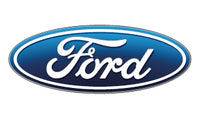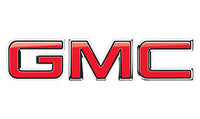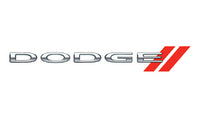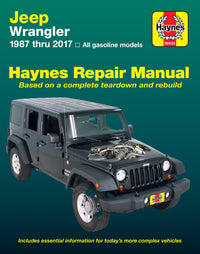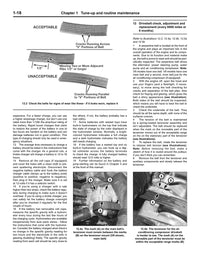As advanced as cars have gotten, the process of troubleshooting a problem hasn't changed much. With modern cars the "Check Engine Light" will come on usually before a problem is bad enough to leave you stranded, when the computer senses something outside of normal operating parameters. But that computer isn't going to help you at all in cases, for instance, when the car won't start.
The fancy computer isn't likely to be able to tell you why the car makes a clunking noise, or pulls to one side either. The computer in the ABS system often has a way to indicate worn brake pads (or the metal indicator tabs will just start squealing), but there is no way for the computer to know one of the brake discs is warped.
It doesn't matter if you drive a 1959 MG MIdget/Austin-Healy Sprite (the first model John Haynes wrote a formal manual for) or a 2017 Jeep Patriot (our latest manual) these troubleshooting tips will apply. To quote directly from that Sprite manual:
"With any fault finding, the first step is to decide where to begin investigations. Sometimes this is obvious, but on other occasions a little detective work will ne necessary. The owner who makes half a dozen haphazard adjustments or replacements may be successful in curing a fault (or its symptoms), but he will be none the wiser if the fault recurs and he may well have spent more time and money than was necessary. A calm and logical approach will be found to be more satisfactory in the long run. Always take into account any warning signs or abnormalities that may have been noticed in the period preceding the fault- power loss, high or low gauge warnings, unusual noises or smells, etc. - and remember that failure of components such as fuses or spark plugs may only be pointers to some underlying fault."

Here's a few tips before you even start:
Verify the fault - If the fault is a flat tire you don't have to do much to verify it. Double check the symptoms before setting out to solve them. This is particularly important if you are trying to fix a problem based on second hand information, for instance, if a friend was driving and calls for help.
Don't overlook the obvious - For instance, is there gas in the tank? Even if the fuel gauge says the tank is full, it may be the gauge itself that is at fault. If there is an electrical problem, check for blown fuses, then look for broken or unplugged wires first.
Cure the disease, not just the symptom - Dead batteries do just happen from time to time due to age, or inadvertently leaving the headlights on, but if there is a charging problem you will quickly end up with a brand new battery that is now just as dead. Spark plugs fouled with fuel or oil are always an indication of a much bigger issue, and just putting in new plugs will only solve the problem in the short term.
Don't take things for granted - Don't assume that new or recently replaced parts must be good, just because they are new. Follow a systematic, step by step fault finding sequence, or you run the risk of missing something and making the job much harder. In most cases, when you do find the problem it seems obvious in hindsight.
Note: Automotive electrical wiring - Unlike your house, most systems in a car operate with direct current, and fairly low voltage (12v). To simplify things, the metal body of the car is usually used as part of the circuit, connecting the negative side of the battery with various components. When tracing a fault test the positive side of the circuit for power, but also make sure the negative connection, or ground, is good and not degraded due to rust or corrosion.
Engine Won't Start/Run
There is always an initial feeling of panic or dread when you get into a car, like you have a million times, and turn the key (or push the button), like every time before, only this time the car doesn't start! If this happens, it is important to separate issues where the motor doesn't turn at all (or just turn slowly) from issues where the motor turns and turns but doesn't start, or where the starter spins but doesn't turn the motor, and then the rare occasion where the engine will start and die immediately, time after time. Each of those behaviors will have a different cause and solution, and knowing the difference will make getting back on the road easier for you, or the mechanic.
Starter turns engine slowly or just clicks
- Low or dead battery
- Bad positive connection at battery or starter
- Bad ground at battery or starter
- Faulty starter or solenoid
- Engine seizure or hydro-lock
Starter spins without turning engine
- Low battery
- Loose starter bolts
- Bad starter
- Bad teeth on flywheel or starter gear
Engine turns normally but won't start
- No gas or bad gas in tank
- Bad fuel pump
- Fouled spark plugs
- No spark
- Ignition timing off
- Timing belt/chain failure
- Other fuel issue
- Other ignition issue
- Bad head gasket/warped head
Engine fires but won't run
- Bad fuel pump
- Clogged fuel filter
- Air leak at intake boot
- Malfunctioning choke (carburetted engines)
- Faulty temperature sensor
- Other fuel injection issue

Engine stalls and will not restart
When this happens, it is almost always at the worse possible moment, like in the left lane of an expressway during rush hour, or 50 miles from nowhere on a dark country road. When and if it happens, and it is a big if because with regular maintenance it may never happen, it is important to remember exactly what the car did seconds before it died. A car running out of gas will sputter and then die, but a car with a bad electrical connection with die immediately as if you turned the key. Once you are safely on the side of the road, you may be able to reason your way into a solution or find a loose wire. Many times it is a simple matter of running out of gas, either due to a leak or the fuel gauge no longer reading accurately, or just absent mindedness.
Engine dies suddenly - Ignition fault
- Engine Control Module (ECM - computer) fault
- Antitheft immobilizer fault
- Bad connection in ignition circuit
- Failed cam/crank position sensor
- Wet distributor/plug wires (in older cars)
- Bad coil (in older cars)
- Bad points or condenser (in really old cars)
Engine sputters or loses power, then dies - Fuel fault
- Out of gas
- Clogged fuel filter
- Clogged evaporative system/vent
- Bad fuel pump
- Contaminated fuel
- Stuck float needle (in older carburetted cars)
Engine Overheating
One of the aspects of 21st century cars that many people take for granted is how thermally stable they are. Between electrically controlled fans, and a computer that can adjust ignition timing and fuel mixture in response to ambient and engine temperatures, cars seldom overheat even in triple digit summer driving. If your car does overheat though, the lightweight aluminum engine castings in modern cars are a lot less forgiving than the old cast iron motors were. Thankfully most cars have a temp gauge and a red warning light to give you advance notice to pull over and stop driving before they go into meltdown mode.
Battery warning light lit
- Broken accessory drive belt (aka serpentine belt or fan belt)
- Bad accessory drive belt tensioner
No battery warning light lit
- Low coolant due to leak
- Stuck thermostat
- Electric cooling fan not switching on
- Internally clogged radiator
- Faulty water pump
- Bad head gasket/cracked head
Engine Noises
Engine noises can often be used to trace and solve other underlaying problems. It is a good idea to listen to the noise and pay attention to what you and the car are doing (accelerating, slowing down, braking, cruising, turning a corner, etc) when/if the noise starts, stops, gets louder, or changes frequency. Two similar noises that occur at different times can have very different causes. A clicking or knocking may seem to keep time with engine revs or road speed, which can indicate a motor issue or a drivetrain issue.
Pre-ignition (pinging) on acceleration
- Bad gas or too low of octane
- Ignition timing incorrect
- Excessive carbon build-up in engine
- Engine running hot
- Maladjusted or worn carburetor
Whistling or wheezing noise
- Leaking vacuum hose
- Torn intake boot
- Leaking intake gasket
- Blown head gasket
Tapping or rattling
- Incorrect valve clearances
- Worn valve train
- Stuck hydraulic lifter
- Loose timing chain
- Bad CV joint (only happens when vehicle moving)
Knocking or thumping
- Unintentional mechanical contact (eg fan blades contacting something)
- Loose drive belt
- Accessory component failure (alternator, AC compressor, water pump, etc)
- Piston slap (will lessen or stop once engine warms)
- Bad crankshaft or connecting rod bearings
